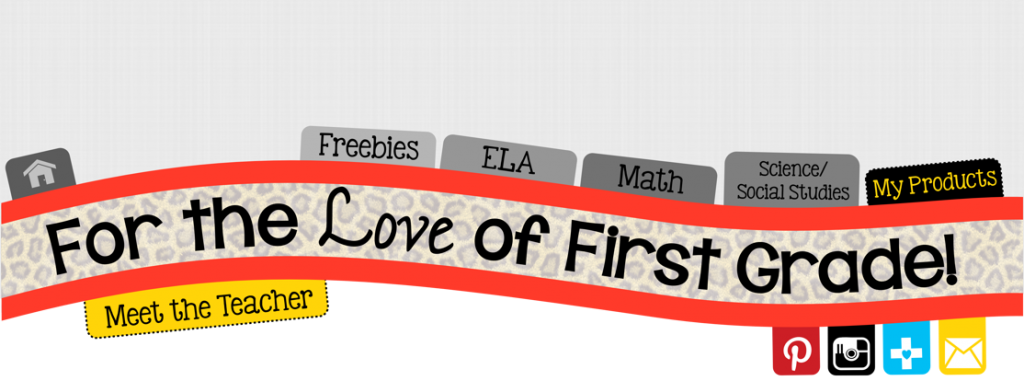One of the best things about being a teacher is having the summer's off being able to collaborate and share your ideas with others who are just as excited about the profession as you are! So today I'm going to share with you a peek inside my classroom in hopes that you are able to take an idea or two away and use it for yourself or pass along the love to others!
Step Inside! Let's GO!
Here is my writing center area.
I keep lots of different supplies students may need to "spruce up" their writing like markers, crayons, gel pens, colored pencils, glue, scissors, etc. They are housed in the black storage drawers.
The stackable trays hold the different writing papers (story templates, books, construction paper, lists, etc.) The "Writers Wall" is where I will display student writing examples for others to see.
You can find all the printables on my bulletin board in the links below.
This is my home away from home, my desk area.
Although not a lot of time is spent here, I try to make it as homey as possible with pictures.
My lovely mom made my desk skirt which hides my refrigerator that's underneath!
Student's turn in their work (see tomorrow's post) in the stacked bins.
If they get in trouble throughout the day the put their purple folder in the yellow bucket for me to sign.
This year I moved my document camera to the end of my desk so that students can come up and easily access it without having to walk all the way around my desk. I have a feeling it will also get me up from behind my desk when teaching...hated that!
All my resources are kept on my 2 black bookcases (from Office Depot) and in my filing cabinet.
Here is our cozy small group meeting area.
I (fingers crossed) normally have 4 different leveled reading groups.
Each of their materials is housed on a different shelf.
The other bookcase holds my materials, assessment binders, privacy folders, and more leveled books.
I keep a lot of games and supplies in the colored drawers for easy access.
I hate having to get up and leave them, time is precious people!
I have 3 computers in my room. Normally they are used for the Listen to Reading station.
I have assembled a site using sqworl.com which has different links they can click on which is SOOOO much better than having them type it in on the search bar. These links take them to directly to the sites.
If you haven't heard of sqworl, check out my page {
HERE}.
At the front of the room is our Smartboard.
I also display our sight words for the week in the purple pocket chart. After the week is over, they make their way up onto the word wall.
If students aren't at their desk working, then they are most likely meeting with me on the floor.
Here is our meeting area, better know as the "Information Hut".
The calendar helper gets the job of updating this area during calendar time.
On the whiteboard is where I keep track of table points.
I like to reinforce positive behavior whenever there is a chance.
The table who reaches 10 points first gets a surprise.
Our daily schedule goes in the long blue pocket chart.
You can find these cards in Cara's store {
here}.
Next to the schedule, I display what we are going to be working on for the day in the magnetic pockets.
I also use my whiteboard as a "wall" to hang our anchor charts, or what we are learning.
Down below are our book boxes.
My sweet hubby took the time to build their house for me last summer when I could find absolutely nothing where they would fit just perfect. He is my hero!
Our listening station is house in front of the white board.
They will be able to choose what book they want to listen too off of the book shelf.
I made crate seats for them to use with their partner while reading the book.
I created a cozy reading nook in one of the corners.
Here I put the zebra chair.
I was lucky enough to snag this for free from a friend who was remodeling their child's room!
This year I've designated a place for our phonics and math charts. They will be hung on my cabinets.
Time for a little rotating!
The small pocket chart is where I place my math tub groups. These rotate on a daily basis.
The next chart is for our center/reading group rotations.
The last chart is my newest addition. They are our classroom jobs.
Here is a post on how I am planning on incorporating them into my room this year.
What do you do when you run out of wall space? Use the corner of course!
Birthdays will be displayed on the cupcakes.
Here's our classroom library, which I spent nearly ALL summer leveling!
The bookcases at the back of the library house all of our literacy centers and math tubs.
I also have math manipulatives in the crate on the side.
Now for a full view with desks and all!
WHEW!!!
That was ALOT!
Hoping you were able to take something away from it!
























































